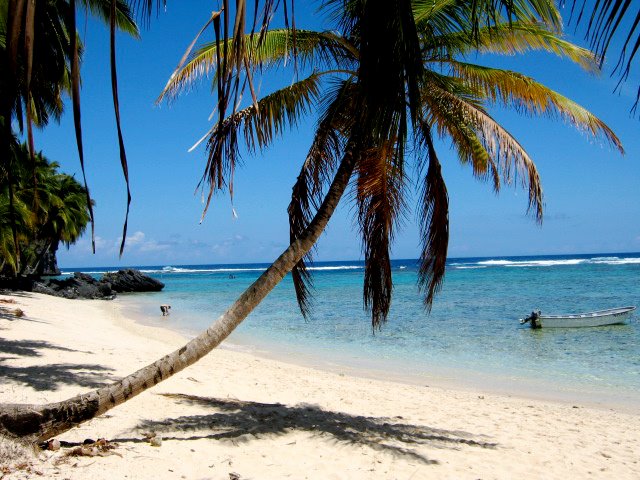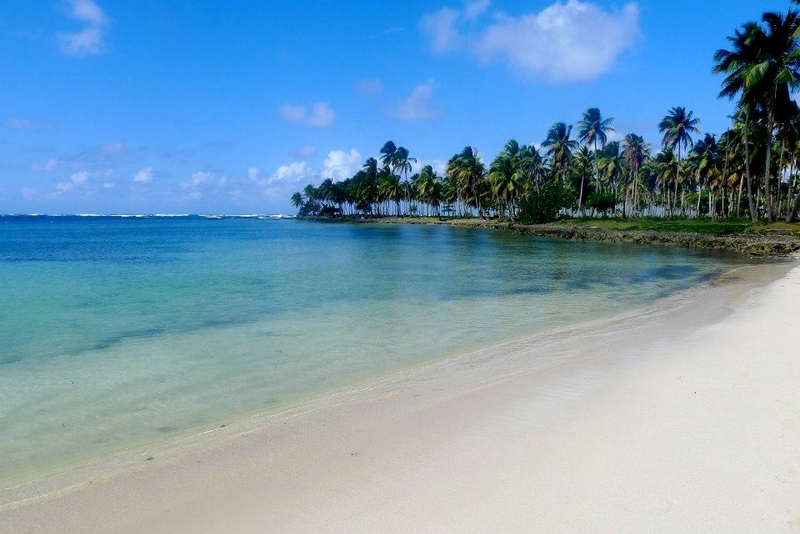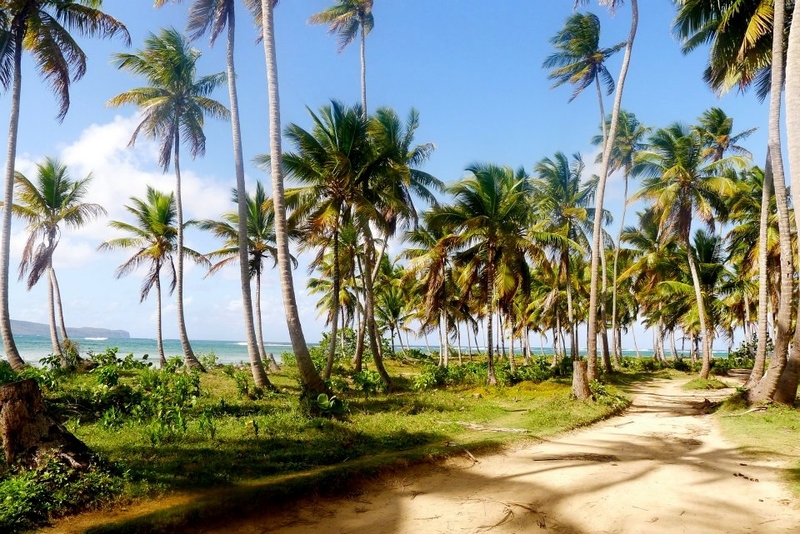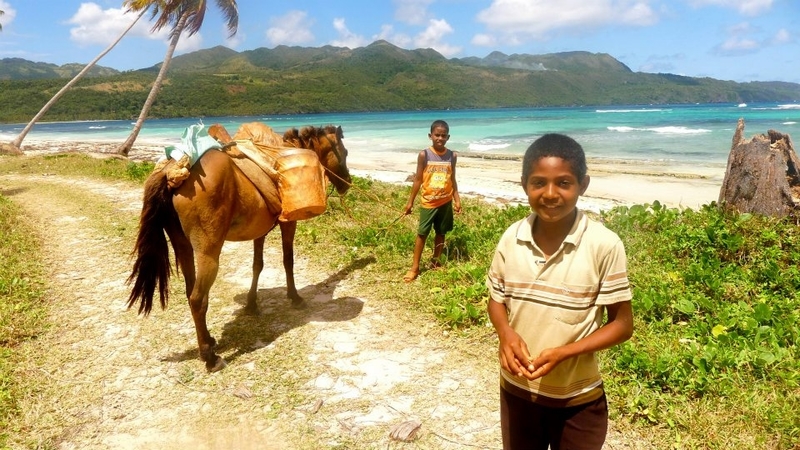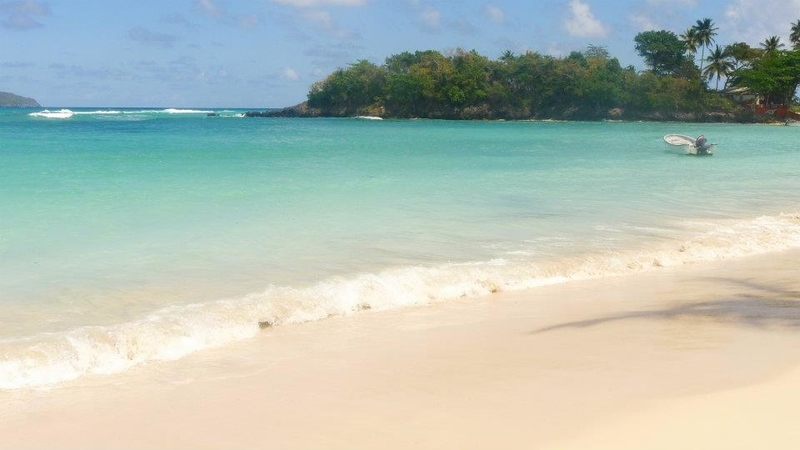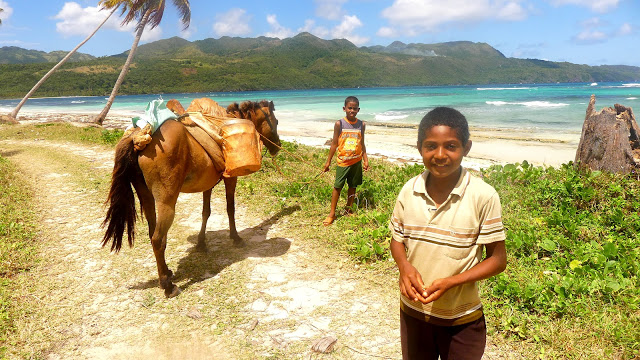
Playa Rincon in the Samana Peninsula
From Santo Domingo, we hopped on a large coach bus and headed across the Dominican Republic to the very tip of the Samana Peninsula–an area that is home to some of the Dominican Republic’s best beaches.
The Samana Peninsula is heavily reliant on tourism from January through mid-March, when the giant humpback whales migrate through the Samana Bay in search of warm waters.
Unfortunately, we arrived in Samana at the tail end of the whale-watching season and the chances that we would actually see whales were dwindling. So, instead of stopping in the town of Samana to participate in an excursion and consequently emptying our wallets for something that was not guaranteed, we decided to jump on a gua-gua (one of the small local busses that connect towns in the Dominican Republic) and head directly to Las Galeras.
Las Galeras is literally at the end of the road. The entire town runs along one street that is lined in shops selling brightly colored Dominican and Haitian artwork. The sleepy feel was somewhat reminiscent of Culebra, though perhaps even more evident.
As soon as Dan and I arrived, we were quickly overcome by the desire to spend a few days doing nothing, and our grand plans to explore the peninsula slowly erased themselves from our itinerary. We would spend the next two days around Las Galeras, hiking to different beaches and soaking up a bit too much sun.
Our lovely hostel in Las Galeras was three kilometers from town along a peaceful, palm-lined road. Multiple times a day, we would make the trek into town–walking through farmland and along the beach. The hike afforded us beautiful views of the bay and it was often possible to see bits of local life along the way. We saw fishermen casting their nets in the sea, young children riding horses along the waterfront and farmers cultivating plantains and bananas.
Despite the large ex-pat population in Las Galeras and the resort we had to pass through on our way to town, we felt constantly surrounded by the day-to-day local life of the Dominicans.
It was wonderful.
On our first day in Las Galeras, we headed off to Playa Rincon Beach–a beach that, on one list, made it to the top ten most beautiful beaches in the world. It is very hard to get to Playa Rincon, even from Las Galeras. In order to access the beach, Dan and I took a little boat taxi across the bay.
Playa Rincon Beach itself is absolutely incredible. Its white sands extend for an uninterrupted three miles and the beach is lined with palm trees that bend in toward the water. The water is of the brightest turquoise I have ever seen and it was so clear that it looked like a swimming pool.We were able to find a place to sit where there was nobody else in sight and the only sounds were the waves gently lapping against the shore.
It was pure bliss.
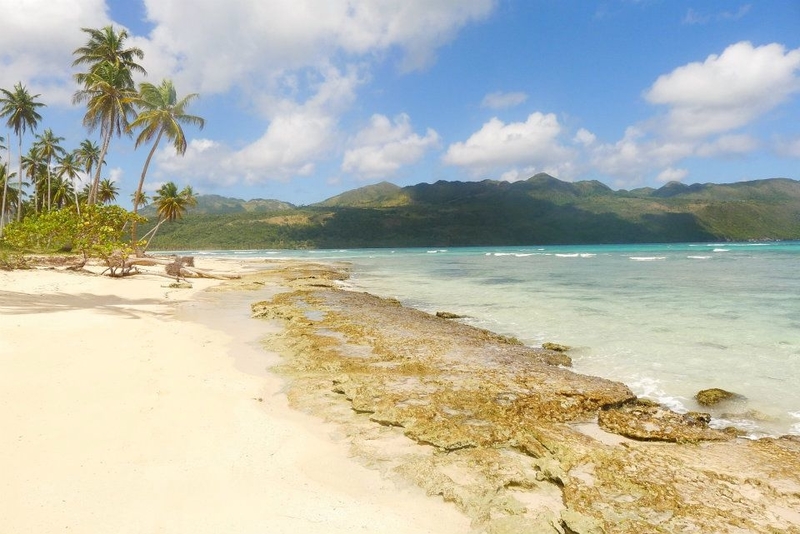 Our afternoon on Playa Rincon was relaxing. We sat on the sand, took a few dips in the water and ate fresh fish at one of the little fish shacks along the beach. It was truly amazing how few people there were at Playa Rincon even though tourism is so important economically to Las Galeras.
Our afternoon on Playa Rincon was relaxing. We sat on the sand, took a few dips in the water and ate fresh fish at one of the little fish shacks along the beach. It was truly amazing how few people there were at Playa Rincon even though tourism is so important economically to Las Galeras.
After a relaxing afternoon at one of the world’s most beautiful beaches, we met up with a few other travelers from our hostel and headed into Las Galeras for dinner and a taste of Dominican nightlife.
It became immediately evident, however, that the nightlife in the bar was very different from what we were used to and that the bar was a magnet for sex tourism. While Las Galeras is not known for sex tourism, other places in the Dominican Republic are. In particular, towns along the northern coast are inundated with wealthy white men seeking a bit of young, local love for the night. Many of these men return year after year to get away from their lives at home and indulge in a few weeks of beaches, partying and sex.
Spending a bit of time in the bar that evening was a harsh reality check. It was disheartening and painful to see young Dominican girls my age with old European men in their fifties and sixties. It became immediately evident that the paradise we experienced in Las Galeras was a far cry from the lived reality of the locals
